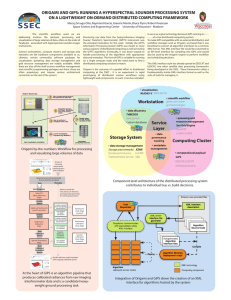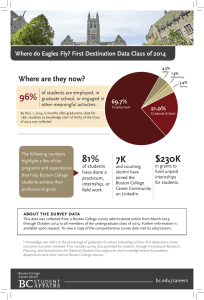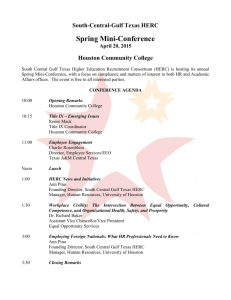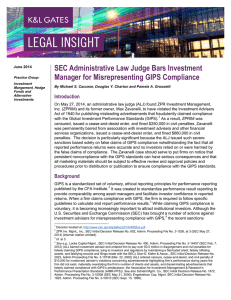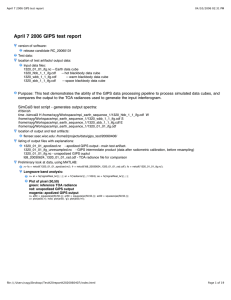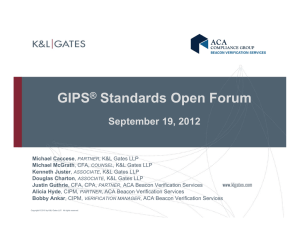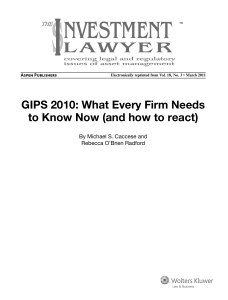Document 11157720
advertisement
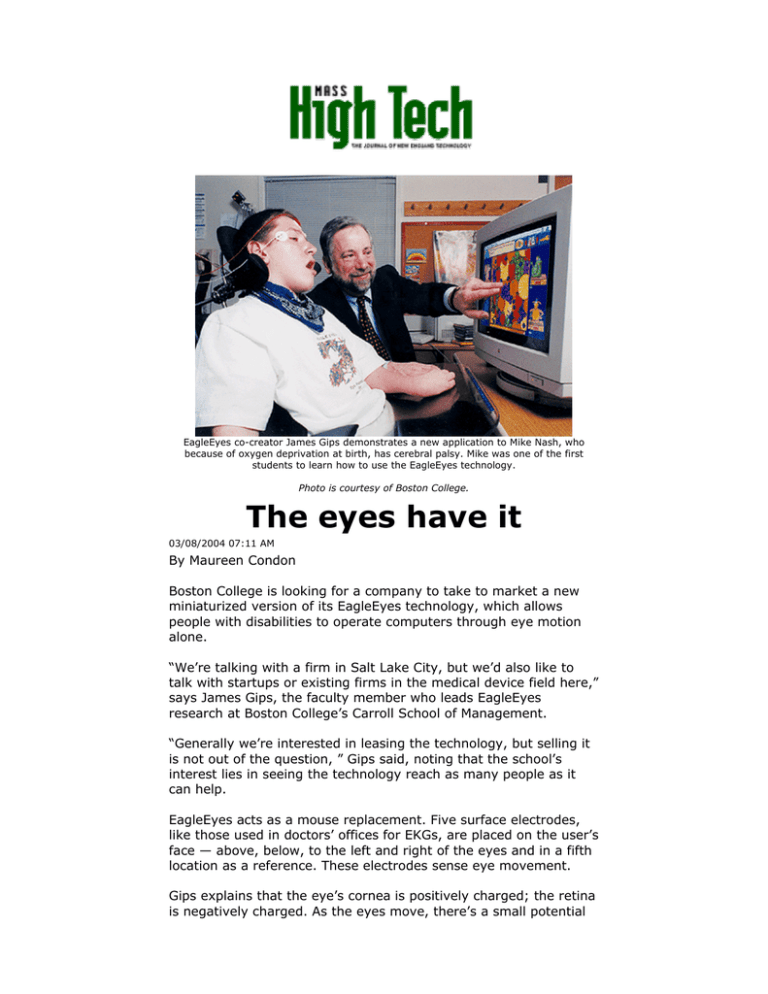
EagleEyes co-creator James Gips demonstrates a new application to Mike Nash, who because of oxygen deprivation at birth, has cerebral palsy. Mike was one of the first students to learn how to use the EagleEyes technology. Photo is courtesy of Boston College. The eyes have it 03/08/2004 07:11 AM By Maureen Condon Boston College is looking for a company to take to market a new miniaturized version of its EagleEyes technology, which allows people with disabilities to operate computers through eye motion alone. “We’re talking with a firm in Salt Lake City, but we’d also like to talk with startups or existing firms in the medical device field here,” says James Gips, the faculty member who leads EagleEyes research at Boston College’s Carroll School of Management. “Generally we’re interested in leasing the technology, but selling it is not out of the question, ” Gips said, noting that the school’s interest lies in seeing the technology reach as many people as it can help. EagleEyes acts as a mouse replacement. Five surface electrodes, like those used in doctors’ offices for EKGs, are placed on the user’s face — above, below, to the left and right of the eyes and in a fifth location as a reference. These electrodes sense eye movement. Gips explains that the eye’s cornea is positively charged; the retina is negatively charged. As the eyes move, there’s a small potential difference — 10 microvolts for every one degree — that can be measured. Sensing this, the electrodes send the signal to amplifiers. In turn, the outputs from the amplifiers are transformed into digital values, which are then sent to the computer to move the mouse pointer on the screen. “This allows persons with disabilities to type using an on-screen keyboard. They click using dwell time,” Gips said, “so if they hold the mouse pointer at a certain point for half a second, it sends the message to the computer to select that letter.” In the miniaturized version of EagleEyes, everything but the electrodes and their wires are contained in a small box that runs off 9-volt batteries. It can be placed on the arm of a wheelchair and connects to any computer through a USB port. “Children with disabilities have to have patience and motivation to use this, but for many who are just trapped in their bodies, all they have is time. EagleEyes enables them to go on the Internet — opening a new world and sharing in some of the experiences of their peers,” Gips said. The EagleEyes project began 10 years ago and in looking for applications for the technology Gips connected with Boston College’s Campus School, which has 45 students ages 3 to 22 with profound disabilities. Since inception, BC’s EagleEyes program has expanded to work with and help children nationwide and overseas — in England at the Holly Bank School in West Yorkshire and at several schools in Northern Ireland. Over the years, dozens of people have worked on EagleEyes and its related projects. Besides many BC undergraduates, BC professors Peter Olivieri in computer science, Joseph Tecce in psychology and Phil DiMattia, director of the BC Campus School, have all been involved. One related technology that Gips, the EagleEyes team and former BC colleague Margrit Betke (now an associate professor at Boston University) have been developing is called the CameraMouse. BC has licensed that technology to a 2-year-old Texas company, CameraMouse Inc. CameraMouse allows persons with disabilities, including amyotrophic lateral sclerosis (Lou Gehrig’s disease), to control a computer through head movements picked up by a video camera mounted on top of the computer monitor. Interested parties can try out CameraMouse at BC or download a free 30-day trial of CameraMouse software at that company’s website: www.cameramouse.com. A $100 USB web cam is required to use the product. “We have wonderful success stories with both technologies. We’ve found children who people have said had the intelligence of an 18month-old and we show that they have perfectly normal intelligence, once we give them the means to communicate,” Gips said. He noted that one student in Massachusetts who had been “certified” as mentally retarded by the State Department of Mental Heath was taught to use EagleEyes, and he graduated from high school last June and was “decertified.” Another student in New Jersey, attending private school because of her disabilities, was able to use CameraMouse and is now reading and writing and is mainstreamed in public school. Cost studies of these technologies have shown that they pay for themselves by allowing school systems to forgo the cost of transporting students to special schools and paying tuition for special programs, Gips said. Now Betke and Gips are embarking on yet another project to help persons with disabilities. This one involves gesture recognition and is part of a new National Science Foundation grant for “Pattern Discovery in Signed Language and Gestural Communication” that has been awarded to Boston University, with Boston College as a subcontractor. “We have children who can make idiosyncratic gestures. For example, one young man, for ‘yes,’ widens his eyes and for ‘no’ frowns. We’d like to develop customized software that visually recognizes patterns in movements like these, translating them into computer commands,” Gips explained. “We are looking for children and adults who are nonverbal and can make some voluntary repeatable gestures to participate in the development of this technology.” Interested parties can contact Dr. Philip DiMattia at 617-552-8424 (dimattia@bc.edu) or Gips at 617-552-3981 (gips@bc.edu). “A lot of the development of EagleEyes and other technologies has been working with the children. The technology is just the tip of the iceberg in delivering successful systems and making a difference in peoples’ lives,” Gips said. When asked how he got into this line of work, Gips said, “I’ve been at Boston College for 25 years, and 10 years ago the project evolved. We had the technology, and it’s so rewarding to be able to help these kids. We’d do anything for them.” This semester, Gips happens to be on sabbatical, working on yet another interesting technology. He’s a visiting professor at the MIT Media Lab working on a concept car project involving General Motors and Frank Gehry, the architect who designed the new Walt Disney Concert Hall in Los Angeles. Maureen Condon is a high tech journalist in the Boston area.
